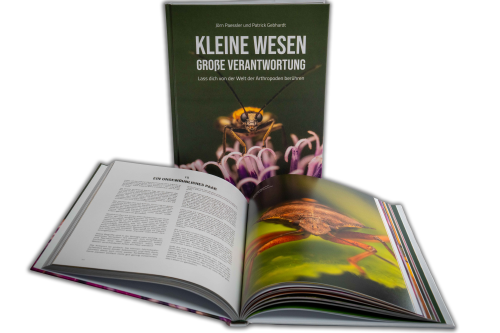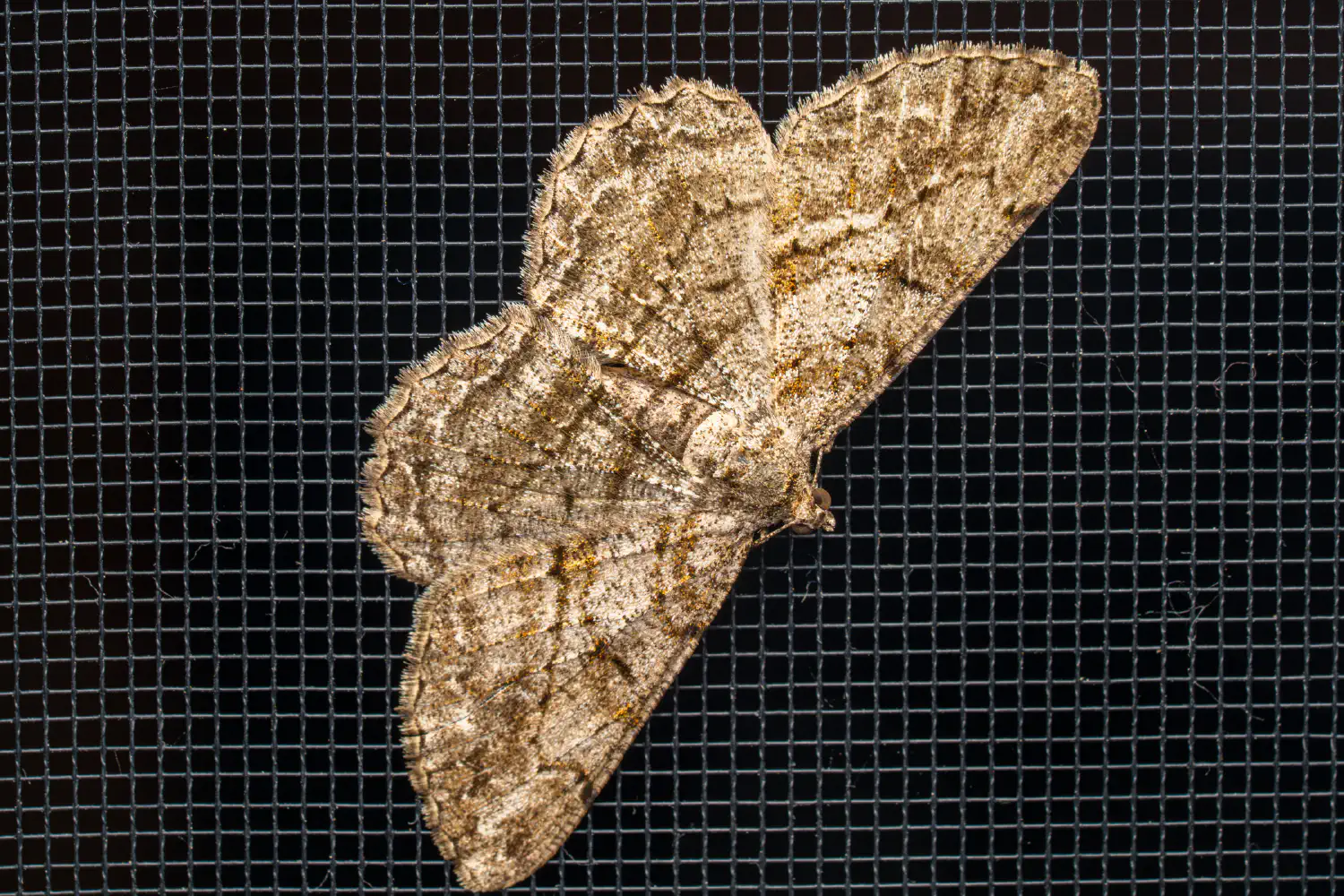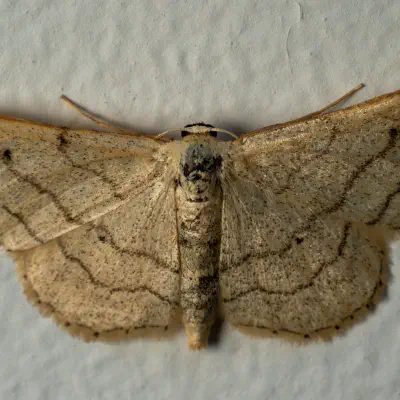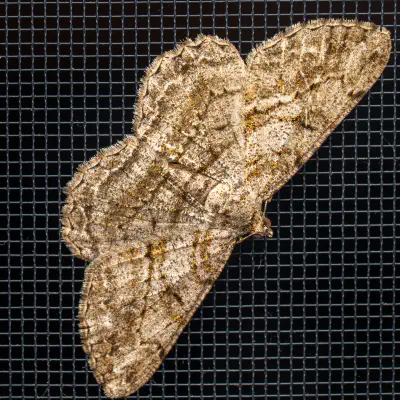Geometer Moths Lat. “Geometridae“
The geometer moths are moths belonging to the family Geometridae of the insect order Lepidoptera, the moths and butterflies. Their scientific name derives from the Ancient Greek geo γη or γαια ’the earth’ and metron μέτρων ‘measure’ in reference to the way their larvae, or inchworms, appear to “measure the earth” as they move along in a looping fashion. A very large family, it has around 23,000 species of moths described , and over 1400 species…
Hierarchy
Caterpillars
The name “Geometridae” ultimately derives from Latin geometra from Greek γεωμέτρης (“geometer”, “earth-measurer”). This refers to the means of locomotion of the larvae or caterpillars, which lack the full complement of prolegs seen in other caterpillars, with only two or three pairs at the posterior end instead of the usual five pairs. Equipped with appendages at both ends of the body, a caterpillar clasps with its front legs and draws up the hind end, then clasps with the hind end (prolegs) and reaches out for a new front attachment, creating the impression that it measures its journey. The caterpillars are accordingly called “loopers”, “spanworms”, or “inchworms” after their characteristic looping gait. The cabbage looper and soybean looper are not inchworms but caterpillars of a different family. In many species of geometer moths, the inchworms are about 25 mm (1.0 in) long. They tend to be green, grey, or brownish and hide from predators by fading into the background or resembling twigs. When disturbed, many inchworms stand erect and motionless on their prolegs, further increasing this resemblance. Some have humps or filaments, or cover themselves in plant material. They are gregarious and are generally smooth. Some eat lichen, flowers, or pollen, while some, such as the Hawaiian species of the genus Eupithecia, are carnivorous. Certain destructive inchworm species are referred to as “cankerworms”. In 2019, the first geometrid caterpillar in Baltic amber was discovered by German scientists. Described under Eogeometer vadens, it measured about 5 mm (0.20 in) and was estimated to be 44 million years old, dating back to the Eocene epoch. It was described as the earliest evidence for the subfamily of Ennominae, particularly the tribe Boarmiini.
Adults
Many geometrids have slender abdomens and broad wings which are usually held flat with the hindwings visible. As such, they appear rather butterfly-like, but in most respects they are typical moths. The majority fly at night. They possess a frenulum to link the wings, and the antennae of the males are often feathered. They tend to blend into the background, often with intricate, wavy patterns on their wings. In some species, females have reduced wings (e.g. winter moth and fall cankerworm). Most are of moderate size, about 3 cm (1.2 in) in wingspan, but a range of sizes occur, from 10–50 mm (0.39–1.97 in), and a few (e.g., Dysphania species) reach an even larger size. They have distinctive paired tympanal organs at the base of the abdomen (these are absent in flightless females).
Systematics
The placement of the example species follows a 1990 systematic treatment; it may be outdated. Subfamilies are tentatively sorted in a phylogenetic sequence, from the most basal to the most advanced. Traditionally, the Archiearinae were held to be the most ancient of the geometer moth lineages, as their caterpillars have well-developed prolegs. However, it now seems that the Larentiinae are actually older, as indicated by their numerous plesiomorphies and DNA sequence data. They are either an extremely basal lineage of the Geometridae – together with the Sterrhinae – or might even be considered a separate family of Geometroidea. As regards the Archiearinae, some species that were traditionally placed therein actually seem to belong to other subfamilies; altogether it seems that in a few cases, the prolegs which were originally lost in the ancestral geometer moths re-evolved as an atavism. Larentiinae – about 5,800 species, includes the pug moths, mostly temperate, might be a distinct family. Sterrhinae – about 2,800 species, mostly tropical, might belong to same family as the Larentiinae.
Birch mocha, Cyclophora albipunctata False mocha, Cyclophora porata Maiden’s blush, Cyclophora punctaria Riband wave, Idaea aversata Small fan-footed wave, Idaea biselata Single-dotted wave, Idaea dimidiata Small scallop, Idaea emarginata Idaea filicata Dwarf cream wave, Idaea fuscovenosa Rusty wave, Idaea inquinata Purple-bordered gold, Idaea muricata Bright wave, Idaea ochrata Least carpet, Idaea rusticata Small dusty wave, Idaea seriata Purple-barred yellow, Lythria cruentaria (formerly in Larentiinae) Vestal, Rhodometra sacraria Common pink-barred, Rhodostrophia vibicaria Middle lace border, Scopula decorata Cream wave, Scopula floslactata Small blood-vein, Scopula imitaria Lewes wave, Scopula immorata Lesser cream wave, Scopula immutata Mullein wave, Scopula marginepunctata Zachera moth, Chiasmia defixaria Blood-vein, Timandra comae Eastern blood-vein, Timandra griseata Desmobathrinae – pantropical Geometrinae – emerald moths, about 2,300 named species, most tropical Archiearinae – twelve species; holarctic, southern Andes and Tasmania, though the latter some seem to belong to the Ennominae, larvae have all the prolegs but most are reduced.
Infant, Archiearis infans (Möschler, 1862) Scarce infant, Leucobrephos brephoides (Walker, 1857) Oenochrominae – in some treatments used as a “wastebin taxon” for genera that are difficult to place in other groups Alsophilinae – a few genera, defoliators of trees, might belong in the Ennominae, tribe Boarmiini
March moth, Alsophila aescularia Fall cankerworm, Alsophila pometaria Ennominae – about 9,700 species, including some defoliating pests, global distribution
†Eogeometer vadens Geometridae genera incertae sedis include:
Dichromodes Homoeoctenia Nearcha
Fossil Geometridae taxa include:
†Eogeometer Fischer, Michalski & Hausmann, 2019 †Hydriomena? protrita Cockerell, 1922 (Priabonian, Florissant Formation, Colorado) †Geometridites Clark et al., 1971
Further reading
Hausmann, A. (2001). The Geometrid Moths of Europe. Vol. 1: Introduction. Archiearinae, Orthostixinae, Desmobathrinae, Alsophilinae, Geometrinae – v. 4. Larentiinae II (Perizomini and Eupitheciini). Apollo Books. Minet, J.; Scoble, M. J. (1999). “17: The Drepanoid / Geometroid Assemblage”. In Kristensen, N. P. (ed.). Handbuch der Zoologie. Eine Naturgeschichte der Stämme des Tierreiches / Handbook of Zoology. A Natural History of the phyla of the Animal Kingdom. Vol. 4: Arthropoda: Insecta. Part 35: Lepidoptera, Moths and Butterflies. Vol. 1: Evolution, Systematics, and Biogeography. Berlin & New York: Walter de Gruyter. Scoble, M. J., ed. (1999), Geometrid Moths of the World: A Catalogue, CSIRO Publishing, ISBN 0-643-06304-8
External links
“Family Geometridae” at Insecta.pro Anacamptodes pergracilis, cypress looper on the University of Florida / Institute of Food and Agricultural Sciences Featured Creatures website Geometridae species in New Zealand Archived 2015-11-07 at the Wayback Machine Geometridae species in Portugal
Ancestry Graph
Further Information
„Geometer Moths“ on wikipedia.org
„Geometer Moths“ on iNaturalist.org
Copyright

This article uses material from the Wikipedia article Geometridae the free encyclopedia Wikipedia which is released under Creative Commons Attribution-ShareAlike 4.0 International License). On Wikipedia a list of authors is available.

Little beings in print
Order our calendars and books today!
Compiled with love. Printed sustainably. Experience our little beings even more vividly in print. All our publications are available for a small donation.



